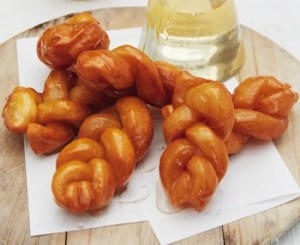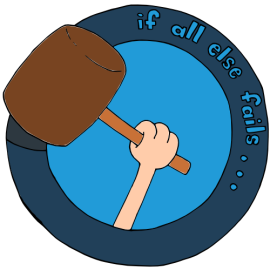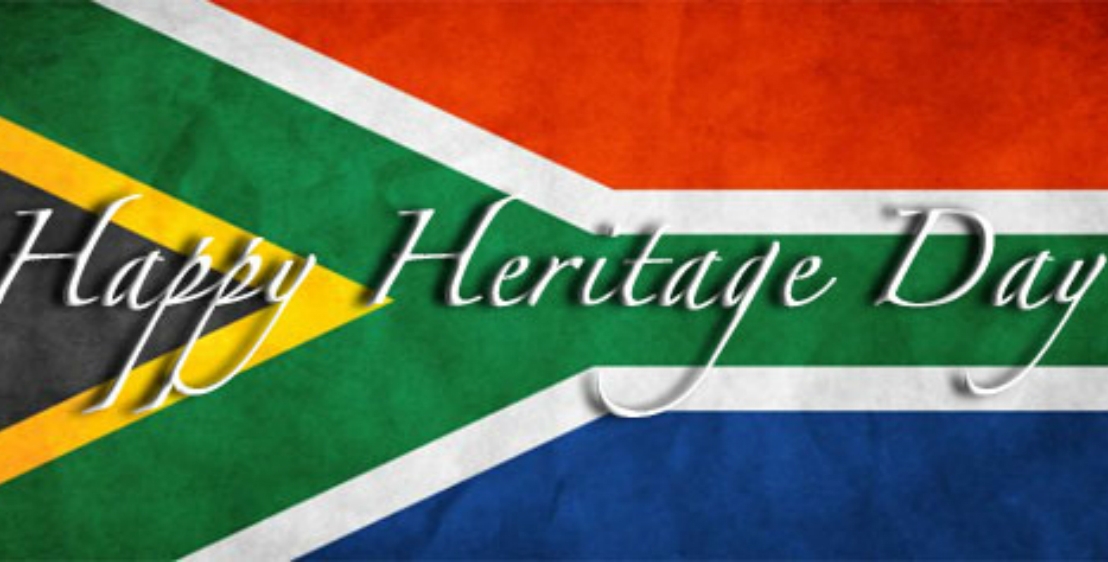Goeiemôre, good morning, dumela, molo, sawubona, salibonani, ndi matseloni, avuxeni, ǃGãi tses, goedendag, bonjour, bom dia, guten Tag, hari yang baik, subaha acchā, subha-ba-khair, marHaban, shalom, Zǎo ān and nzuri asubuhi.
No, I’m not swearing at you. Today we celebrate Heritage Day in South Africa. Our country is incredibly diverse in terms of cultures, histories, religions, languages and natural heritage. The purpose of today is to remember and celebrate who we are and where we come from.
One of the most obvious signs of diversity in our country is in the languages we speak. To start with, we have eleven official languages protected by our constitution. Several of those eleven languages have various dialects and there are a couple of pidgin languages as well, combining several official languages into one. And I don’t even know how many other languages are spoken here, either by descendants of the original European settlers or more recent migrants.
So be greeted today in just a few of the many tongues spoken in South Africa.

The first greeting is in Afrikaans, my home language. Afrikaans was derived mainly from Dutch, but also contain influences from German, French, English, Portuguese, Malay and some “African” languages. While it’s not usually included when people speak of “African languages”, it is in fact as African as a language gets, originating on the African continent, spoken only by people who have their roots in South Africa, and the very name of the language means “African”. It is the third most common language spoken in the country as primary language and, while it originated among early European settlers, today the majority of its speakers aren’t white. Yeah, I love my language.
I hope none of you had a problem with the second greeting. One could probably argue that the one good thing that came from British colonialism during the past two centuries is that it gave the world the closest thing we’ve had to a lingua franca since the Roman Empire. In SA it’s the most common language, spoken by half the population (though not necessarily as primary language or even fluently – it only ranks fifth as primary language) and the primary language of government, business and education. (I feel I should mention that these are the only two I speak, though I know individual words from several of our other official languages and can at least greet someone in Sesotho.)

The third greeting, Dumela, is the same in the three Sotho languages. Southern Sotho, or Sesotho, is the primary language spoken in my part of the country, the Free State province. Northern Sotho, called Sepedi in our constitution, is spoken primarily in Gauteng. Setswana is spoken in the North-West province, which borders Botswana. While there are some differences between the three languages, speakers of one are usually able to understand the other two fairly well, even if they cannot speak the others fluently.
Molo (o’s pronounced with a round mouth, like the consonant sound in “ball”) is in isiXhosa, the second-most-spoken primary language in South Africa, belonging to the Nguni language group. It is spoken nationwide, but especially in the Eastern Cape, the province that lies along the south-eastern coastline, as well as large parts of the Western Cape. It is the home language of former president, Nobel Peace Prize winner and international icon, Mr Nelson Rolihlahla Mandela.

Sawubona is in isiZulu. Also one of the Nguni languages, it is the language spoken as primary language by the most people in SA. The Zulus are the largest ethnic group in the country and most of them live in the Kwazulu-Natal province between the Drakensberg Mountains (one of our eight world-heritage sites) and the eastern coastline (where you can find another world-heritage site, the iSimangaliso (St Lucia) Wetland Park). Notable Zulu-speakers include the legendary warrior-king, Shaka, and our current president, Mr Jacob Gedleyihlekisa Zuma.
Sawubona is also the greeting in siSwati, another Nguni language. This language is spoken in the north-east of our country. It is also the official language of our neighbour, The Kingdom of Swaziland, one of the last absolute monarchies on Earth, ruled over by King Mswati III.

Salibonani is in isiNdebele, our last Nguni language and, along with siSwati, spoken mainly in the north-eastern province of Mpumalanga (meaning “place where the sun rises” in the four Nguni languages). It is also the language of many Zimbabwean immigrants living in SA today.
Ndi matseloni (Tshivenda) and avuxeni (Xitsonga) are the last two official languages and are spoken mainly in the Limpopo province, the most northern province of the country which borders Zimbabwe.
You might be interested to know that the oldest language in South Africa, Nama or Khoekhoe, spoken by the Khoisan people, is not one of our official languages. I suppose this is because there are very few native speakers left, including the nomadic San, or “bushmen” who still ranges the Kalahari desert in the Northern Cape province and our neighbours, Namibia and Botswana. By the way, don’t ask me how to pronounce ǃGãi tses – I’d probably permanently injure my vocal apparatus.
Even though Khoisan is not an official language, it’s status as our oldest language was officially recognised when the motto on our coat of arms was written in this language. ǃke e: ǀxarra ǁke means “diverse people unite” and is remarkably similar to the motto on the old coat of arms, Ex unitate vires, which is Latin for “unity in strength”.
Next I greeted you in Dutch, French, Portuguese and German – the languages of the original European settlers and which are still spoken by many people in SA today. The Malay language, which is next, was brought here on slave ships of the Dutch East-India company and several Malay words today form part of Afrikaans (and many of their dishes are considered traditional food by Afrikaners).
Lastly, I included Hindi, Urdu, Arabic and Hebrew for all the people in SA who hail from India, Pakistan and the Middle East, Mandarin to represent all the Chinese people living here today and Swahili to represent the many immigrants from central Africa.
I could have added more, like Swedish, Flemish, Greek, Indonesian, Korean, Tamil (which is actually taught in some schools) and many more that I probably haven’t even heard of.
From this you can hopefully get some idea of the richness of this country’s history and culture. We have so much to offer, and today we celebrate that.




Nothing makes me as emotional about South Africa as the languages. I only speak Afrikaans and English at the moment too, but I’m trying really hard to learn Xhosa. It’s just so difficult! Love this country of ours. On a different note, when I was traveling and made a halfway stop in SA, some of my American colleagues tried to speak to the kids in Khayelitsha in FRENCH!
LikeLike
Haha! Someone probably told them of all the French-Congolese and French-Nigerian immigrants in the Cape and they thought that meant everyone there could speak French. Some of the churches in CT offer services in French, after all. Thanks for dropping by.
LikeLike
Really interesting post! Wow, eleven official languages! That is really neat. And sounds a bit complicated. Thank you for the recipe. It sounds really good. Or maybe I’m just starving because it’s almost lunch time…
LikeLike
It can get complicated, especially politically. And in schools it’s a nightmare, as the law guarantees mother-tongue education but there aren’t textbooks or even the academic terminology in all the languages to make this possible.
In practice, the Language of Learning and Teaching is either English or Afrikaans (and you can only take the government exams in those two languages), though you can take any language as your primary language (determined by your region and school – in my region, for example, Sesotho is the only other language offered) with either English or Afrikaans then as secondary language.
I have to warn you, making koeksusters is actually quite a chore. If you make some, be sure to keep them in the deep freeze, not the fridge. And you serve them straight from the freezer – no need to defrost.
LikeLike
I can imagine. Probably not accurately, but I would imagine having that many languages would cause problems on all levels. That’s really too bad about the education. I hope someday that can be resolved to give children a good education they deserve.
I think I can handle it. It can’t be any worse than the massive chore we turn making holiday cookies into. We do a lot of baking/cooking in the winter months, so even though it might not be soon, I will keep the recipe on hand. Thank you for the tip.
LikeLike
Cool post. “Language diversity of SA” used to be my favourite linguistics course at Uni 😀
LikeLike
Over here it’s more a topic for politics than for linguistics 😉
LikeLike
Lekker pos!
LikeLike
Dankie 😉 Later kom daar een oor braai…
LikeLike
SA has such a fabulous and diverse heritage – and an extraordinary history. Eleven languages! A fantastic richness of peoples and culture. New Zealand has but two – English and Te Reo Maori. I’ve always been fascinated by the glottal-click languages – I recall !Kung was one I discovered, slightly, at university as part of my original anthro degree. And it’s cool to have a day to celebrate all this.
LikeLike
That it is. Sadly, my Twitter feed today is overflowing with my countrymen spouting cynicism and negativity. Sure, our country is a mess politically and economically, but there’s so much good as well. It’s as if people just don’t notice that anymore.
LikeLike